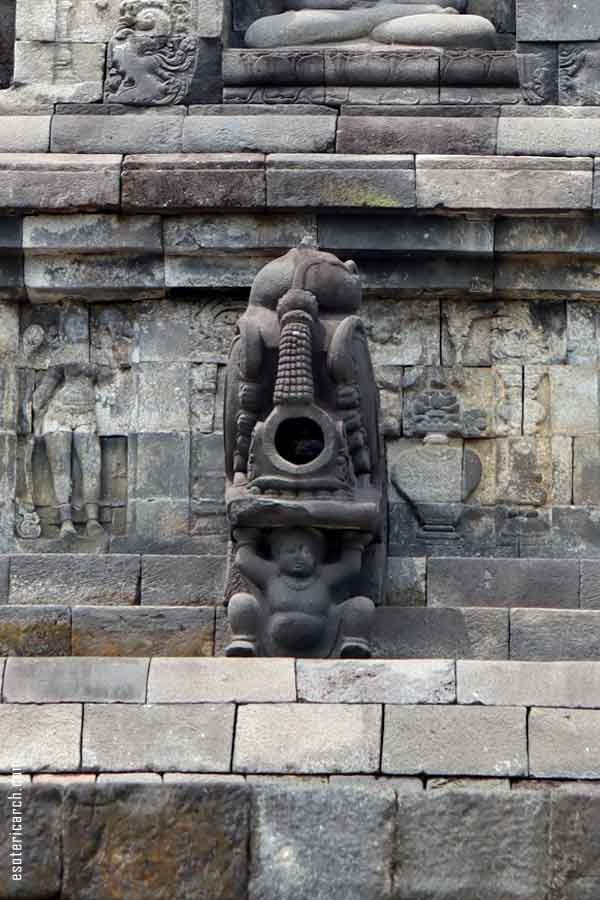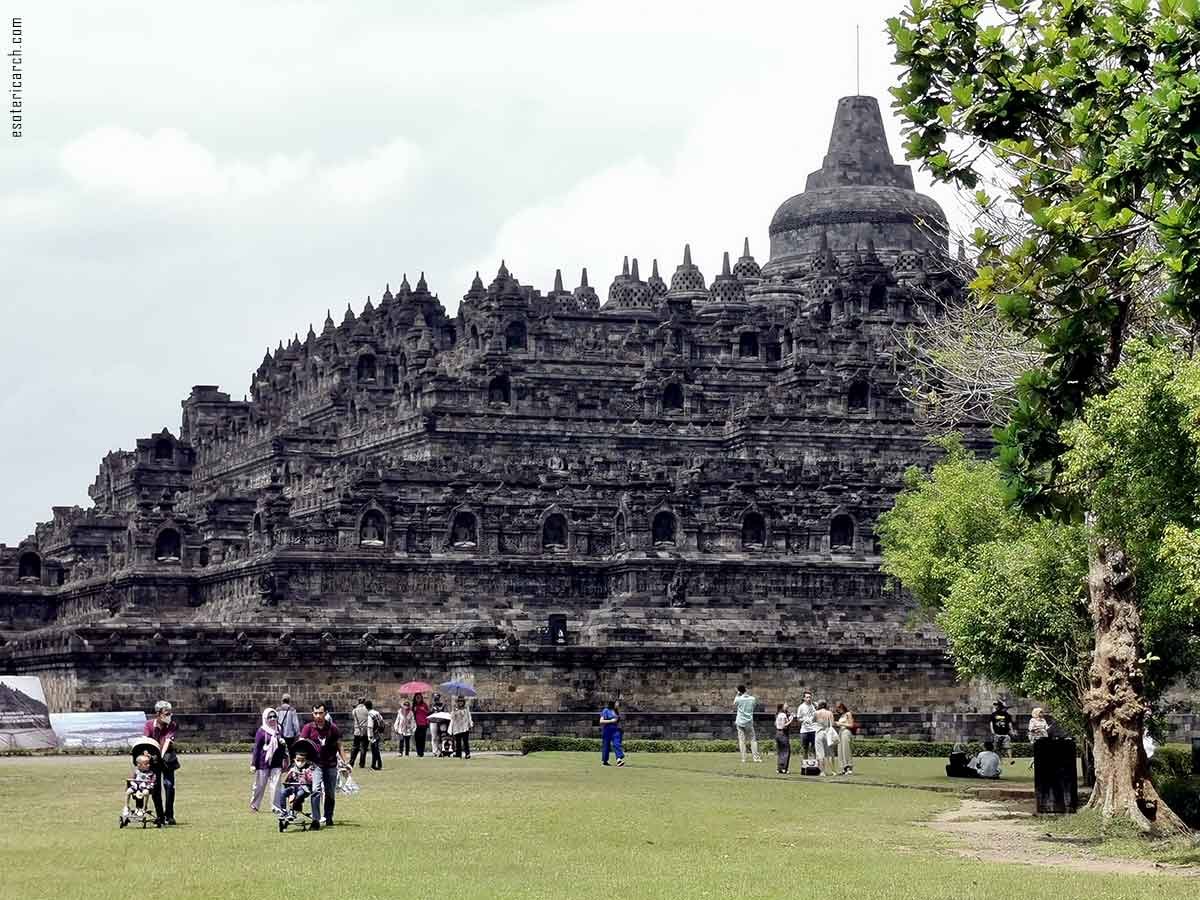From Earth to Nirvana: Architecture of Borobudur
Uncovering all hidden meanings of Borobudur Temple’s architecture: the mandala design, the lotus, the cosmic mountain, – a spiritual pilgrimage where each design element reflects stages of enlightenment and universal balance.
T
ucked within the verdant heart of Central Java, amidst lush forests and volcanic peaks, stands Borobudur—a marvel of esoteric architecture that transcends the boundaries of time and space.
Borobudur is the largest Buddhist temple in the world.
Built in the 8th–9th centuries by the Sailendra dynasty, this grand Buddhist stupa embodies cosmic geometry and metaphysical principles, guiding seekers on a pilgrimage toward enlightenment. As the world’s largest Buddhist temple, Borobudur serves as a living mandala, harmoniously integrating artistry, spirituality, and architectural precision.
In this exploration, we uncover the hidden meanings, profound symbolism, and cosmic resonance of Borobudur—a monument that offers an experience at once earthly and divine.
The Esoteric Foundations of Borobudur’s Architecture
The architecture of Borobudur masterfully integrates three profound archetypes: the stupa, the temple mountain, inspired by the mythic Mount Meru central to Hindu cosmology; and the mandala, the Buddhist symbol of the universe, that artfully merges the grounded square of earth with the ethereal circle of the heavens.
These symbolic elements converge to form Borobudur as both a mandala and a lotus, embodying layers of spiritual meaning in its architectural essence.


Borobudur Temple – A Sacred Mandala in Stone
Borobudur’s design epitomizes the esoteric art of the mandala, unfolding as a three-dimensional representation of the cosmos. With the integration of sacred geometry, its architecture articulates three realms of existence:
- Kamadhatu (Realm of Desire): The hidden base of Borobudur, intentionally concealed, holds reliefs that reveal the entanglements of human desires and karma cycles, grounding the structure in the realities of worldly suffering.
- Rupadhatu (Realm of Form): The middle terraces rise in a series of labyrinthine galleries, each adorned with intricately carved panels that symbolize humanity’s transcendence of earthly attachments.
- Arupadhatu (Realm of Formlessness): The crowning circular terraces, sparsely decorated yet visually striking, represent the formless realm. Each terrace is a step toward liberation, culminating in the central stupa—a singular beacon of ultimate enlightenment.
This architectural progression mirrors the spiritual path toward nirvana, guiding pilgrims from earthly bonds to transcendent understanding through the temple’s ascending layers.

Borobudur as a Lotus in Full Bloom
It’s often said that from above, Borobudur resembles a lotus flower, a symbol of purity and spiritual awakening.
From the grounded base to the pinnacle, Borobudur “blooms” like a lotus rising from the mud—a reminder of the soul’s journey from earthly attachments to the light of spiritual wisdom.
The temple’s design appears to embody the lotus form, with Buddha statues across its structure evoking the essence of the Lotus Sutra, a significant text in Mahayana Buddhism prominent throughout East Asia. The three circular terraces near the summit are believed to symbolize lotus petals.
Graphic and web design is our business. We attach great importance to ‘craftsmanship’
On the brown walls of the flattened, overlapping leaves of the sturdy fibered guano there was a picture in color of the Sacred Heart of Jesus and another of the Virgin of Cobre. These were relics of his wife. Once there had been a tinted photograph of his wife on the wall but he had taken it down because it made him too lonely to see it and it was on the shelf in the corner under his clean shirt.

Leave a Comment